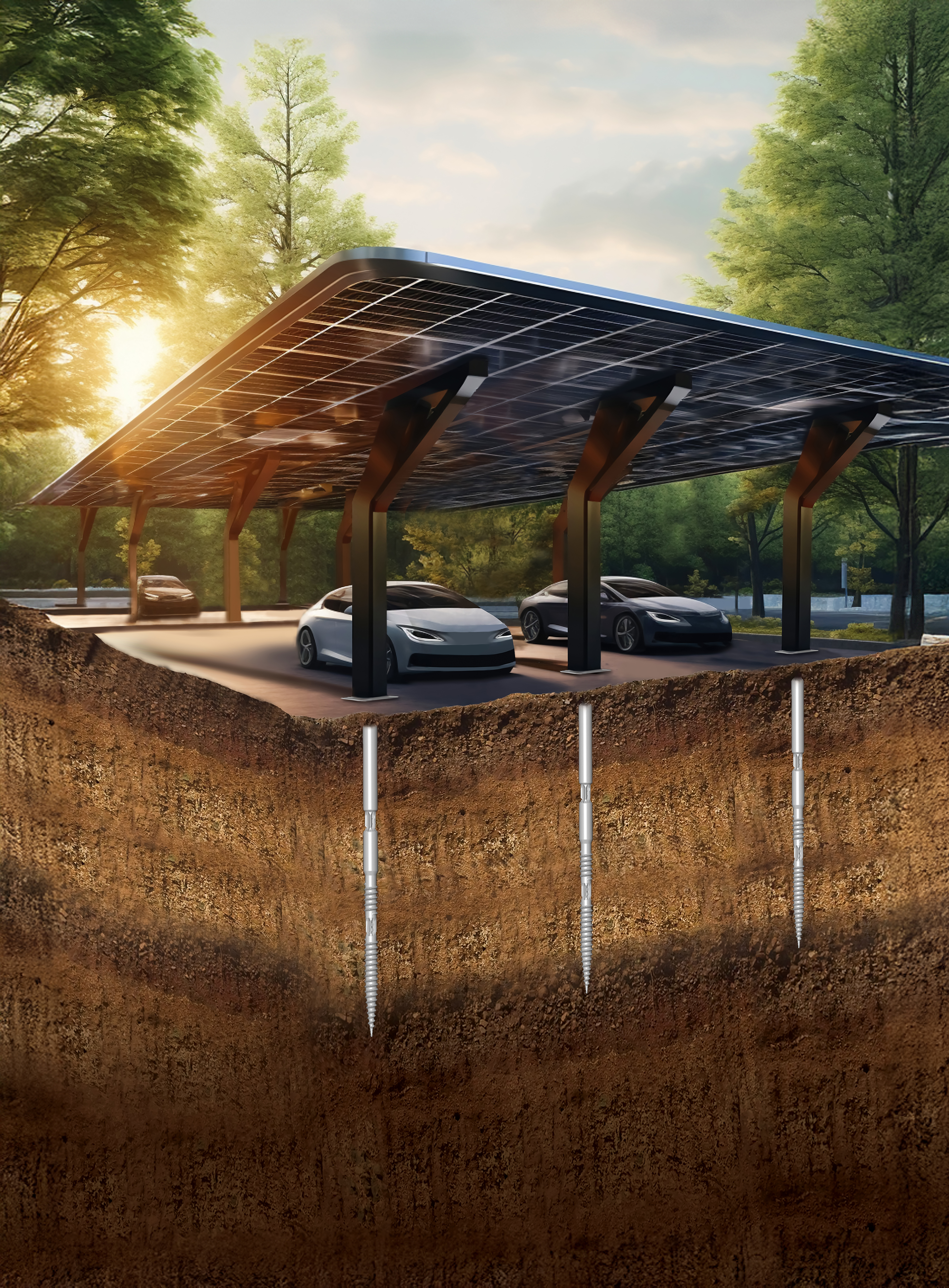Monday, September 8, 2025
Carport on Screw Piles - Design and Installation

Carports have become a popular alternative to traditional garages, protecting vehicles from rain, snow, and sun. Increasingly, instead of heavy and time-consuming concrete foundations, screw piles are used for their construction. This innovative solution offers many benefits but requires specialized knowledge during the design and installation phases. In this guide, we discuss the key aspects to consider to ensure the structure is safe, durable, and economical.
Structural Challenges of Screw Pile Foundations
Designing structures based on screw piles is a specific task that differs from working with concrete foundations. The small diameter of a screw pile makes it significantly more susceptible to horizontal deformation. For this reason, proper stiffening of the carport structure is crucial.
Designing Support in the Context of Bending Moments
A single screw pile is highly capable of carrying axial forces (compression and tension) but has low moment stiffness. In cases where bending moments need to be transferred, such as in single-support ("T" or "L" type) carports, it becomes necessary to use an appropriate pile cap, or a "traverse beam." This beam converts the bending moment into a pair of forces (compression and tension), effectively distributing the loads to two piles instead of just one.
This solution is much more beneficial and allows for savings on foundation size. For this reason, designing a carport on at least two supports is often the optimal choice, which significantly simplifies and reduces the costs of the foundation.
Recommended Column-to-Foundation Connections for Carports
The connection of a column to a screw pile foundation is traditionally made with screw connectors. Due to the high load-bearing capacity of the foundation's head plate, it can be significantly smaller than with concrete foundations. The designer should leverage this advantage to create an economical and efficient mounting plate.
Furthermore, it is recommended that the column base be designed as a hinge. This solution ensures favorable performance for both the column and the pile itself, eliminating the need to expand the base and reducing stress.
How to Ensure Stability and Stiffness of a Carport Structure?
Due to the working characteristics of small-diameter piles in the ground, the in-plane stiffness of the carport is a crucial design aspect. To achieve this, several proven solutions can be used:
Rigid frame: Using a rigid frame in the plane of the carport effectively stiffens the entire structure.
Braces: Adding braces between the purlin and the column is another effective method to increase stiffness.
Cross-bracing: Full-size cross-bracing is the most effective, but due to aesthetics and functional considerations, it is often not desirable.
Proper structural design is fundamental, but execution precision is equally important. Even the best-designed carport will fail if the installation is not carried out correctly.
Installation: Considering Tolerances and Saving on Parking
The installation of screw piles involves certain positional tolerances in the plane. A professional designer must account for this by designing connections between the pile and the structure in a way that accommodates these installation tolerances. This can be achieved by using slotted holes (so-called "beans"), which allow for position correction during assembly, or by drilling holes directly on the construction site.
One of the biggest advantages of screw piles is their minimal interference with the existing ground surface. Foundation work is limited to driving piles at a few support points, which allows for a significant reduction in installation time and costs.
Reliable Pullout Capacity
Screw foundations are characterized by exceptional pullout capacity. This feature is key for carports, which are exposed to strong winds. Thanks to the use of an external helix plate, the pile works in a stable manner, utilizing not only skin friction but primarily the direct resistance of the plate in the ground. This mechanism ensures the safety and stability of the structure even in difficult soil conditions.
Durable and Economical Carport Construction with Screw Piles
Designing and installing a carport on screw piles is a process that requires specialized engineering knowledge. By properly considering the specific characteristics of screw piles, such as their susceptibility to horizontal deformation or their mechanism for transferring moments, it is possible to create a durable and economical structure. This solution is an excellent alternative to traditional concrete foundations, offering quick installation and minimal interference with the ground.
Would you like to learn more about the possibilities of using Winkelmann Foundation Screw piles in your project? Contact us, and our experts will prepare an optimal solution for you, taking into account all the specific conditions of your project.